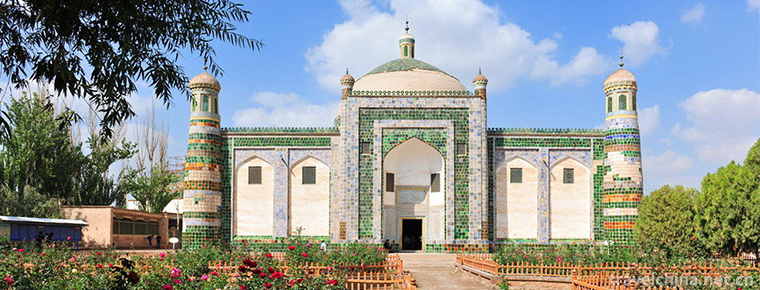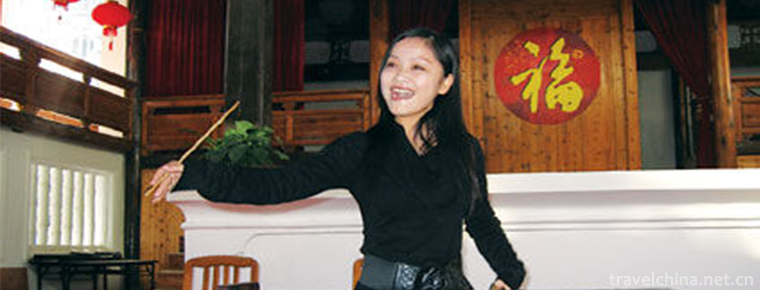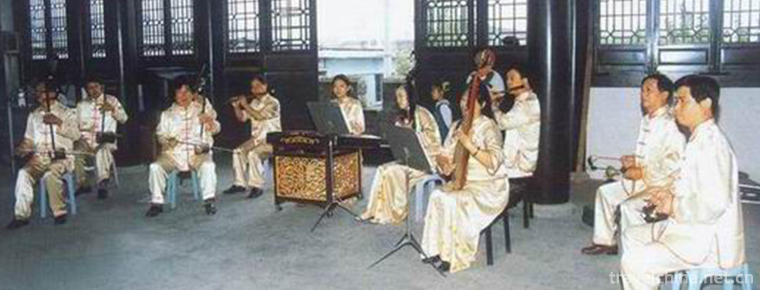China Maritime Museum
China Navigation Museum, fully known as "Shanghai China Navigation Museum", is the first national navigational Museum approved by the State Council. It is co-constructed by the Ministry of Transport and the Shanghai Municipal Government in Shanghai. The museum is located in Nanhui New Town, Pudong New Area. It covers an area of 24830 square meters and has a total building area of 46434 square meters. The foundation was laid on January 20, 2006, and was fully opened on July 5, 2010. The Museum has an indoor exhibition area of 21,000 square meters. Based on the theme of "navigation", the museum is divided into six major exhibition halls: navigation history, ships, navigation and ports, maritime and maritime safety, seafarers and military navigation, fishing boats and fishing, marine sports and leisure, and two special exhibition areas, including an astronomical museum, a 4D cinema and a children's activity center, covering cultural relics collection, academic research, social education and exhibition. Yes.
The first batch of national practical education bases for primary and secondary school students.
Historical evolution
In July 2005, the Shanghai Municipal People's Government decided to invest in the construction of the National Maritime Museum in Shanghai.
In January 2006, the foundation of the project of China Maritime Museum was laid.
In July 2006, Minister of Transport Li Shenglin and Mayor Han Zheng of Shanghai jointly unveiled the "China Navigation Museum" brand.
In December 2006, the first meeting of the Shanghai China Maritime Museum Working Group was held in the executive meeting room of the Shanghai Municipal People's Government. The meeting deliberated and agreed in principle to display the exhibition outline.
In September 2007, the mayor of Shanghai, Han Zheng, issued the municipal government decree No. 74, promulgating and implementing the donation measures of Shanghai China Maritime Museum. Shanghai China Maritime Museum held its first donation ceremony.
In September 2009, the civil engineering of Shanghai China Maritime Museum was completed.
In January 2010, the preparatory staff of the Shanghai China Maritime Museum moved to the office of the port-vicinity Museum as a whole.
In March 2010, the Committee of the Chinese Maritime Museum of the Communist Party of China was established in Shanghai.
In June 2010, the China Maritime Museum in Shanghai completed its exhibition and went into trial operation.
In July 2010, Shanghai China Maritime Museum officially opened.
architectural composition
The China Navigation Museum is a comprehensive navigational museum with an indoor exhibition area of 21,000 square meters. The exhibition area is divided into three layers. On the first floor, there are nautical history hall, ship hall, seafarer hall, fishing boat and fishing exhibition area; on the second floor, there are nautical and port hall, maritime and maritime safety hall, military navigational hall, and nautical sports and Leisure Exhibition area. The museum also has an astronomical museum, a 4D cinema and a children's activity center.
Exhibition hall display
Navigation History Museum
Navigation History Museum is the key exhibition hall of China Navigation Museum. The museum is divided into three exhibition areas, ancient, modern and modern, with time as its main line. The buoyancy crossing, canoe, wooden boat, sail, oar, sled, rudder, compass and other shipbuilding and navigation technologies will be developed in parallel with the main line of time, so that the audience can have a deeper understanding of the invention and evolution of China's navigation technology.
Shipping Hall
Navigation and Port Pavilion
The Navigation and Port Museum mainly displays the marine environment, various instruments and instruments to ensure the navigation of ships from ancient times to present, including geographic navigation, astronomical navigation, radio navigation and so on. At the same time, a large number of cultural relics and objects reflecting ports and waterways are displayed.
Maritime and Maritime Safety Pavilion
The Maritime and Maritime Safety Pavilion is composed of two separate exhibition areas: Maritime and Maritime Safety. The Maritime Museum exhibits maritime evolution and maritime supervision and law enforcement through physical objects and auxiliary graphics and texts. The Maritime Safety Pavilion displays the thematic contents of salvage, salvage and piracy prevention at sea through physical objects, models, multimedia and electronic maps.
Seafarers Pavilion
Seafarers'libraries mainly display physical objects and documents closely related to seafarers' work and life. The navigational simulator located in the center of the pavilion takes the cab of a large container ship as the prototype of the simulator, vividly demonstrates the characteristics of modern ship driving, and enables the audience to experience the feeling of being a captain once by actively manoeuvring the ship.
Military Navigation Pavilion
Military Navigation Museum is divided into two parts: the construction of the Chinese People's Navy and the knowledge of warships. It focuses on displaying various warship models, naval flags and naval uniforms. The submarine command module is restored by high simulation. Shipborne artillery and other objects were displayed outdoors.
Collection
Overview
The Chinese Maritime Museum takes "maritime affairs" as its main line and "natural relics" as its basis, systematically demonstrating the development of China's maritime cause yesterday, today and tomorrow. The building area of the pavilion is about 2000 square meters. There are about 260 exhibits in kind, 130 photographs and images, 70 documents, 30 models, and about 10 scenes and sand tables. Among the many exhibits, there are many precious items, such as crew certificates, ship nationality certificates, ship ownership certificates and the East Coast Chart of 1875.
Shipping hall is divided into two parts: ship structure and equipment and ship manufacturing. Through the decomposition, introduction and display of ship structure, equipment and construction, it presents a clear and transparent ship drawing to the audience. At the same time, it combines interaction, environmental simulation, audience participation with cultural relics and objects. When displaying the ship's structure, a high simulation profile model of 1:6 large cargo ship with a captain of about 25 meters and a height running through two layers of display space was made.
Treasures in Holdings
Eight minute instrument
Octant (English name: Octant) is an early British product. Its production dates are 1772 and 1830, respectively.
The sextant was invented in 1751 with the octave as the model, and gradually replaced by the sextant. There are few octaves in China.
Astronomical Clock
Astronomical clock is a specially designed instrument which can express the space-time movement of celestial bodies in various forms. It combines power machinery and many transmission machinery in a whole. It uses several sets of gears to slow down the movement of the wheels, so that it often keeps a constant speed, consistent with the movement of celestial bodies. Astronomical clocks can not only express the celestial phenomena, but also timing, which is closely related to human navigation.
One of the clocks is Thomson brand, which was produced in St. Albans, England in the early 20th century. The clocks are exquisitely designed and well preserved, especially the chic 72-minute timing design.
ship model
There are about 420 ships in the whole museum. Besides the special ship model area, it is more dispersed in the exhibition halls of the museum, covering all kinds of typical or famous civil ships and warships at all times and in all over the world. All the prototype vessels of display models occupy an important position in the history of China's navigation and shipbuilding, and a few of them are world famous ships. Ship models are customized according to the requirements of China Haibo from famous ship model making experts or studios at home and abroad. They are unique art treasures.
The shape of a ship with a reduced model in a certain proportion can be seen from the micro scale of 1/6000 to the manned proportion. The model ship of Zhonghai Bo integrates art and function, and is an indispensable element of the museum.
Jinhu wood rudder
Jinhu wood rudder was found in Niupi Reef waters of the Yangtze Estuary in 2005.
The rudder retains the first found belly bladder hole; in addition, the rudder also has a perfect rudder hole (through the operation of perforated ropes to elevate the rudder), which is the most complete rudder hole found in archaeological archaeology up to now.
This wood rudder is the most complete unbalanced wood rudder found so far. It has a unique rudder structure connection form and a complete thick rudder blade.
Honor
China Navigation Museum was officially awarded the title of "Shanghai Special Science Popularization Venue" by the Office of Shanghai Joint Conference on Science Popularization on December 20, 2010.
Visiting information
Admission ticket
Adults 50 yuan; primary and secondary school students 25 yuan with student certificate; elderly people 60 years old and above 10 yuan with valid certificate; children under 1.4 meters height (accompanied by parents) are free to visit.
Opening Hours
9:30-16:30 (stop admission at 15:30); closed on Monday, except for holidays.
Traffic information
Bus routes
Longgang Express Line (Shengang Avenue Station), Sangang Special Line (Shengang Avenue Station), Shengang 1 Road (Shengang Avenue Station, Second West Lake Road) and Shengang 3 Road (Shengang Avenue Station, Third West Lake Road).
Metro Line
Take Metro Line 16 and get off at Dishuihu Station. Then take Shengang 1 Inner Ring Road (2 stops) and get off at Shengang Avenue Station, Huanhu West Second Road.
Self-driving line
Outer Ring Line S20 (Pudong Airport Direction) Turn S2 High Speed (East China Sea Bridge Direction) Dishuihu Lake Export to China Navigation Museum.
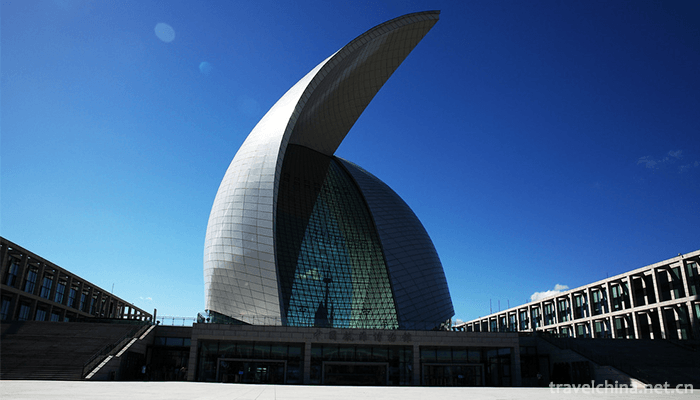
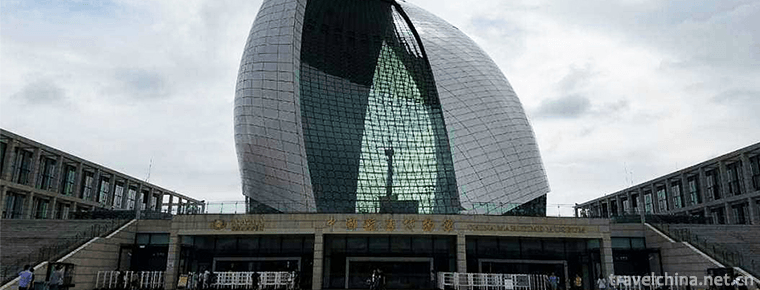
China Maritime Museum
-
Baiyun Mountain
located in Baiyun District of Guangzhou City, Guangdong Province
Views: 180 Time 2018-10-12 -
mount fanjing
Fanjingshan: National AAAAA-level tourist attractions, National Nature reserves, China's top ten summer resorts, China's famous Maitreya Bodhisattva Dao
Views: 270 Time 2018-12-12 -
Mandarin Oriental Hotel Guangzhou
Wenhua Oriental Hotel is located in Tianhe District of Guangzhou, which belongs to Wenhua Oriental Hotel Group. It is a five-star hotel. The hotel has 233 rooms and 30 suites, and 24 hotel-style servi
Views: 233 Time 2018-12-16 -
Beijing Wildlife Park
Beijing Daxing Wildlife Park is located in the 10,000 Mu forest of Yuyuan Town, Daxing District. It is a large natural ecological park with animal protection, wildlife domestication and breeding and p
Views: 121 Time 2018-12-26 -
Abakh Hoja Tomb
Xiangfei Tomb is located in Haohan Village, 5 km east suburb of Kashgar City. It is a key cultural relic protection unit in the autonomous region. This is a typical Islamic complex of ancient building
Views: 171 Time 2019-02-25 -
Xumishan Grottoes
Xumishan Grottoes, located 55 kilometers northwest of Guyuan City, Ningxia, is located in the north of Liupan Mountain. It is the only way to the east of the ancient "Silk Road" and one of t
Views: 131 Time 2019-02-26 -
Chun an Triangle Opera
Sanjiao Opera is one of the traditional operas in Hangzhou, Zhejiang Province. Chun'an folk custom is still singing and dancing. Every Spring Festival Lantern Festival, there are Nuo operas
Views: 128 Time 2019-04-22 -
Fuzhou Reviews
Fuzhou dialect commentary is a unique traditional form of storytelling in Fuzhou dialect of Fujian Province, which is popular in Fuzhou, Fujian Hou, Yongtai, Changle, Lianjiang
Views: 147 Time 2019-04-30 -
Legend of Liu Yi
The legend of Liu Yi's biography is one of the oldest popular folklores in Chinese history. With Liang Zhu, Tianxian Pair and White Snake Legend, they are called the four legends of Chinese folklore.
Views: 215 Time 2019-05-14 -
Shaoxing Ci Tone
Shaoxing Ci Diao, also known as Flower Diao, is commonly known as vernacular. It is a traditional folk song sung by blind artists (most of whom are women), and a story sung by three to nine people in
Views: 159 Time 2019-06-14 -
Dong Zhongshu
Dong Zhongshu (179 BC - 104 years ago), Guang Chuan (Hebei Jingxian County southwest, Jingxian County, Gucheng, Zaoqiang three counties junction) people, the Western Han Dynasty. philosopher emperor j
Views: 131 Time 2019-09-07 -
Guangan primary industry
In 2019, the sown area of grain in Guang'an City is 287000 hectares, and the total grain output is 1.8 million tons, an increase of 1000 tons or 0.04%. Among them, the rice output was 1.047 million tons, down 0.4%; the corn output was 448000 tons, an incre
Views: 184 Time 2020-12-19




